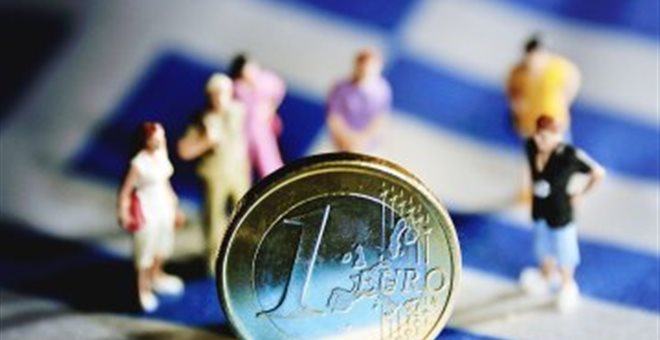Lithuania adopted the euro at midnight, New Year’s Eve – on the 15th anniversary of the launch of the single currency in 1999. This is a major achievement for Lithuania and for the euro area. The addition of Lithuania to the euro means that some 337 million Europeans in 19 Member States now share a common currency. January 1, 2015, marks the first day that Lithuanians will start withdrawing euro cash and paying for their purchases in euro.
Valdis Dombrovskis, Vice-President of the European Commission responsible for the Euro and Social Dialogue, said:
“I want to warmly welcome Lithuania to the euro. Lithuania’s accession marks the completion of the Baltic States’ journey back to the political and economic heart of our continent. This is a symbolic moment not only for Lithuania, but also for the euro area itself, which remains stable, attractive and open to new members. I am convinced that the Baltic States’ membership in the euro area will strengthen the economy of the region by making it even more attractive to businesses, trade and investment.”
Pierre Moscovici, Commissioner for Economic and Financial Affairs, Taxation and Customs, said:
“In joining the euro, the Lithuanian people are choosing to be part of an area of stability, security and prosperity. Lithuania has a strong track record of sound fiscal policies and structural reforms, which have delivered some of the highest growth rates in Europe, coupled with steadily falling unemployment. The country is well-placed to thrive in the euro area.”
From tomorrow, the euro will gradually replace the litas as the currency of Lithuania. There will be a dual circulation period of two weeks, during which the two currencies will be in use alongside each other in order to allow for a progressive withdrawal of Lithuanian litas. When receiving a payment in litas, the change will be given in euro. This has been made possible thanks to thorough preparations ahead of the introduction of the single currency.
The introduction of euro cash
Commercial banks have received euro banknotes and coins in advance from Lietuvos Bankas, the Lithuanian Central Bank, and have in turn supplied euro cash to shops and other businesses.
A total of 900,000 starter kits with euro coins bearing Lithuanian national sides have been available to the general public since 1 December. Moreover, 110,000 dedicated starter kits have been offered to retailers.
As of 1 January, Lietuvos Bankas will exchange unlimited amounts of litas into euro at the official conversion rate (€1= 3.45280 LTL) for an unlimited period of time and free of charge. Commercial banks will provide unlimited cash exchange services free of charge until 30 June 2015. Post offices will change litas cash up to the value of €1,000 per transaction free of charge until 1 March 2015.
Nearly all automatic teller machines in Lithuania will distribute euro banknotes within the first 30 minutes of 1 January 2015. To facilitate the process, some banks have extended business hours. On 1 January, some 50 branches of the largest banks will be open during the afternoon. Several banks will deploy additional staff for cash operations in branches during the dual circulation period. Post offices will not open on 1 January, but against usual practice will do so on the first weekend of January.
The conversion of prices
Prices have had to be displayed both in litas and euro since 23 August 2014. This rule will apply at least until 30 June 2015. In order to address consumers’ concerns about price increases and abusive practices in the changeover period, a campaign on good business practice upon euro introduction was launched in August 2014. It calls on businesses (e.g. retailers, financial institutions, internet shops) to commit via signature of a memorandum not to use the adoption of the euro as a pretext for increasing prices of goods and services, to apply the official conversion rate and rounding rules and to indicate prices in both currencies (litas and euro) clearly and understandably, and not to mislead consumers.
Compliance with the requirements for price display and conversion during the dual display period and the implementation of the ‘Memorandum on Good Business Practice upon the introduction of the euro’ is monitored in particular by the State Consumer Rights Protection Authority. It may impose fines and put the names of enterprises that do not observe the Memorandum on a publicly available “black list”.
Background
In its 2014 Convergence Report released on 4 June, the Commission concluded that Lithuania met the criteria for adopting the euro. On 23 July 2014, the EU Finance Ministers took the formal decision that opened the way for Lithuania’s adoption of the euro.
Thereafter, Lithuania started preparing the entry into the euro area by implementing its national changeover plan, providing all the details for the organisation of the introduction of the euro and the withdrawal of the litas. This set, for instance, the timetable for supplies of euro cash to commercial banks and to retailers, the rules for cash exchanges for citizens to be applied before and after “day one” of the euro, the strategy for adapting bank accounts, electronic payments systems and ATMs to the euro.
The preparations for the changeover have been complemented by a comprehensive communication campaign by the Lithuanian authorities. The European Commission and the European Central Bank have contributed to these efforts.


































